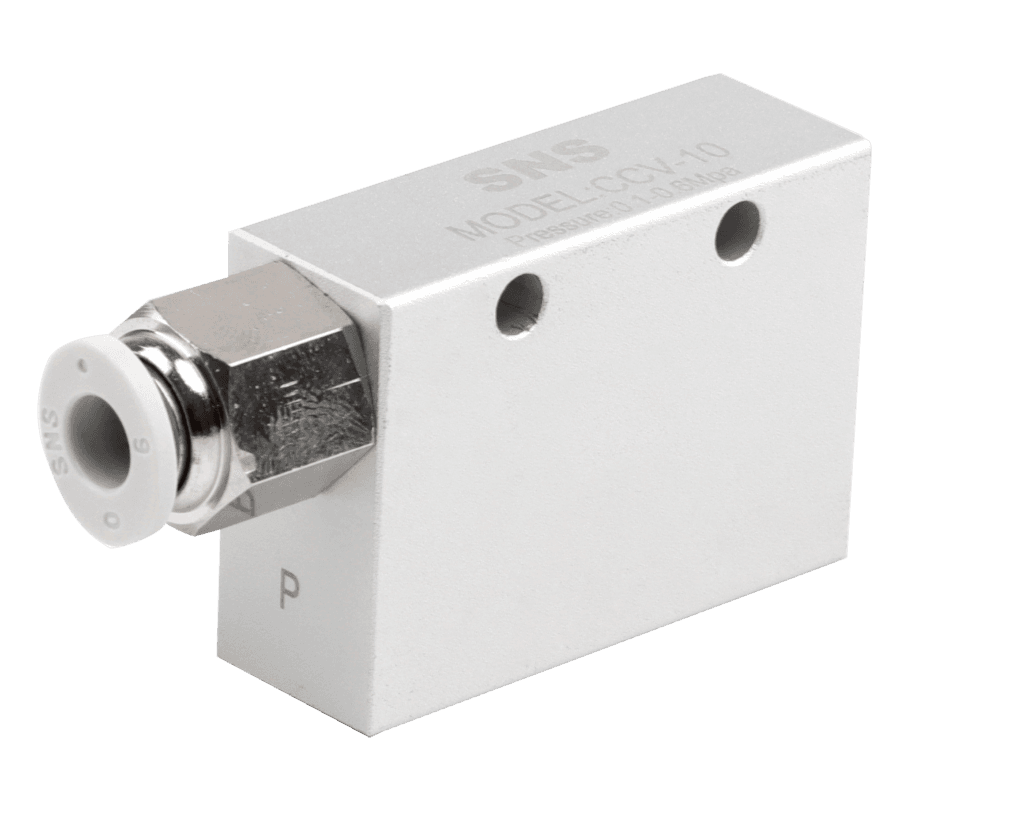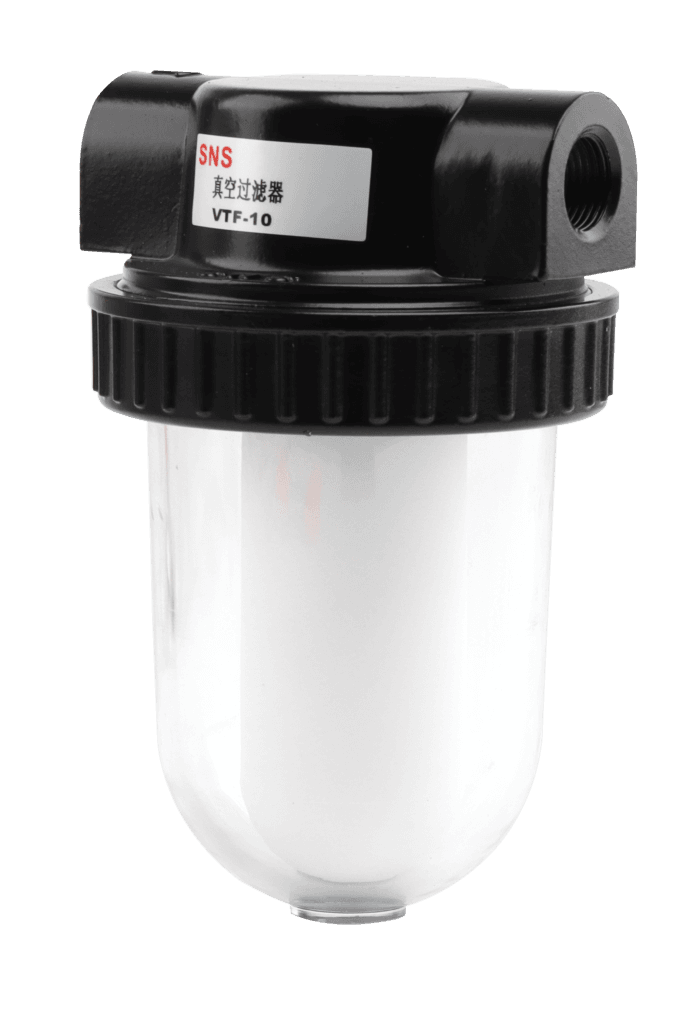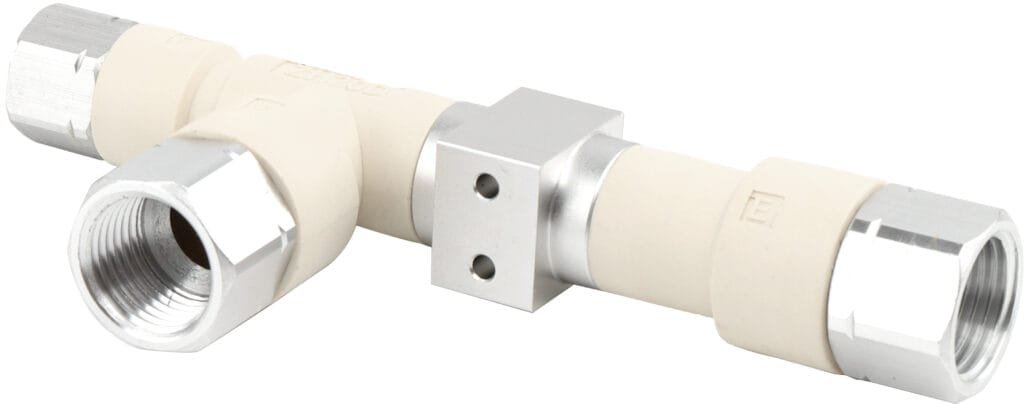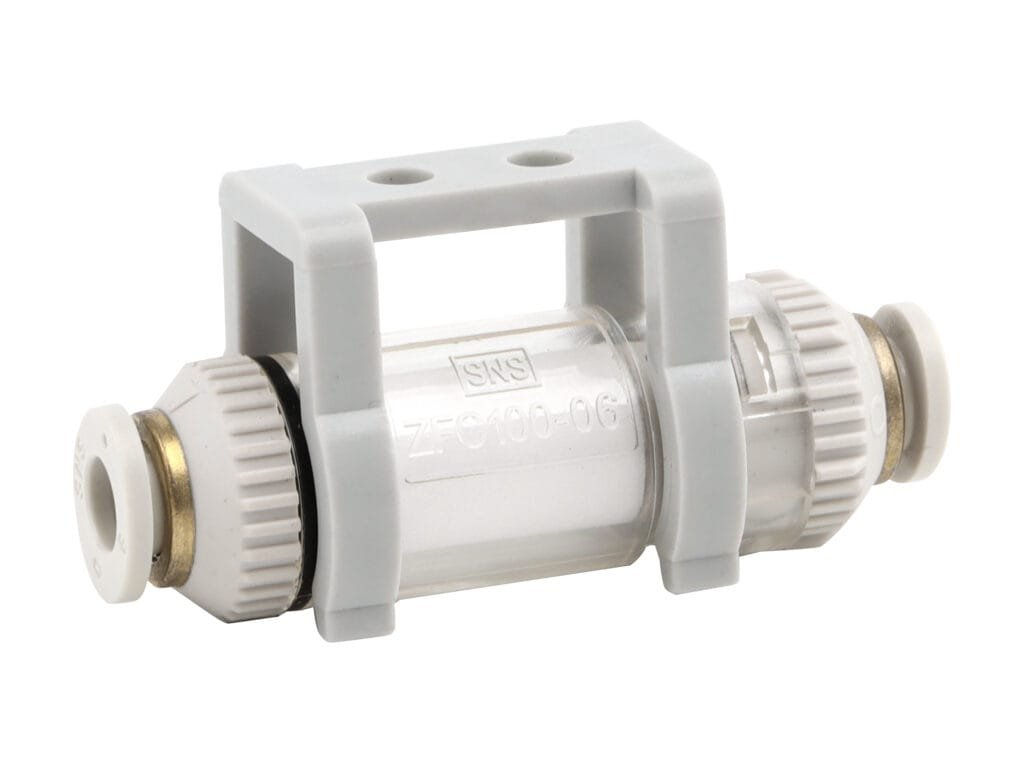What is Pneumatic Control System And How Does It Work
A pneumatic control system utilizes compressed air to operate and control mechanical processes and machinery. It is a form of automation technology widely used in various industries, from manufacturing to transportation, due to its reliability and simplicity. These systems are essential for tasks that require accurate and responsive control using air pressure as the driving force.
In this article, we will explore the fundamental components of a pneumatic control system and understand how they all work together to facilitate controlled motion and operations. We’ll also delve into the advantages and potential applications of these systems across different sectors.

What is Pneumatic Control System
A pneumatic control system is a sophisticated mechanism that utilizes compressed air as a means of energy to operate various types of machinery and equipment. The core principle behind these systems lies in converting the kinetic energy from compressed air into mechanical motion. This process allows for the precise regulation of various industrial processes, including controlling machinery, actuating valves, and managing assembly lines.
The essential components of a pneumatic control system typically include an air compressor, which generates the pressurized air; a series of valves that direct this air; hoses and tubes that transport the air; and actuators that convert the air pressure into motion. These elements work collaboratively to form a circuit designed to achieve regulated and controlled mechanical movements.
How do Pneumatic Control Systems Work?
Pneumatic control systems operate by using compressed air to transmit and control energy. These systems are comprised of various components such as valves, actuators, sensors, and regulators that collectively direct and manage the flow of compressed air to execute desired tasks. At the heart of a pneumatic system is the compressor, which generates the necessary pressurized air. This air travels through a series of pipes and hoses to reach control valves, which can be positioned along the circuit.
The control valves adjust the airflow according to signals received by controllers or manual inputs. When the valve opens, it allows pressurized air to pass through; when it closes, it restricts or blocks this flow. The processed air then reaches an actuator – typically a cylinder or similar device – where energy from the compressed air gets converted into mechanical motion. This mechanical force can be linear or rotary based on the type of actuator being used.
Sensors in pneumatic systems provide feedback about operational conditions such as pressure levels or position status directly back to the controller for real-time adjustments as needed. These responses ensure accuracy and consistency in performance by adjusting parameters on-the-fly during operation.
How To Incorporate Pneumatic Systems
Incorporating a pneumatic control system involves understanding and implementing two main components: actuators and modular control components. Actuators are devices that convert the energy from compressed air into mechanical motion. They can be linear, with pistons moving back and forth, or rotary, with shafts that turn to control angles. Common types of pneumatic actuators include cylinders, motors, and grippers, each tailored to different applications.
Modular control components act as the building blocks of a pneumatic system’s architecture. These include valves for controlling flow direction, regulators for managing pressure levels, and filters for maintaining clean airflow. When integrating these elements into a system, careful consideration should be taken to ensure compatibility between components regarding pressure ratings, flow capacities, and connectivity.
To seamlessly integrate these systems together:
- Determine the operational requirements such as force needed, speed of actuation, and stroke length for actuators.
- Choose appropriate modular components based on required airflow rate and pressure regulation.
- Ensure fittings and connectors are standardized across all modules for easy maintenance and scalability.
- Arrange components in an efficient layout that considers ease of access for monitoring and repairs.
- Execute proper calibration procedures so that all parts function in unison accurately.
| Criteria | Description |
|---|---|
| Actuators | Devices converting compressed air into mechanical motion; includes cylinders (linear motion), motors (rotary motion), grippers (grasping objects). |
| Modular Control Components | Building blocks including valves (flow direction), regulators (pressure management), filters (air cleanliness); require standardization for compatibility. |
| Integration Process | Involves determining operation requirements; choosing suitable modules; standardizing connections; planning layout; calibrating system collectively. |

Actuators
Actuators are devices responsible for converting compressed air energy into mechanical motion, thereby facilitating movement and control within various industries. These entities come in different types based on their design and function, including linear actuators, which create straight-line actions, and rotary actuators that deliver rotational motion.
Linear actuators can drive equipment such as valves or assembly lines, where they employ a piston housed within a cylinder to extend or retract along a linear path. Rotary actuators, on the other hand, are typically used for turning mechanisms and robotics by rotating parts around an axis. The selection of an actuator is contingent on specific application requirements such as force output, speed of movement, operational environment conditions, and compatibility with other system parts.
| Type of Actuator | Description | Typical Applications |
|---|---|---|
| Linear Actuators | Convert compressed air into linear motion | Valves opening/closing, Material handling |
| Rotary Actuators | Facilitate rotational motion via compressed air | Robotic arms, Machinery adjustment |
Modular Control Components
Modular control components in pneumatic systems are the building blocks that facilitate integration, control, and modulation of air flow and pressure within the system. These components typically include a range of devices such as valves, regulators, filters, lubricators, sensors, and controllers that can be combined in various configurations to meet specific application requirements.
The design of modular components often allows for easy assembly and disassembly, which simplifies maintenance and system upgrades. Valves are used to start or stop the flow of compressed air, regulate its direction, and manage the flow rate. Regulators maintain consistent output pressure despite fluctuations in input pressure or flow demand. Filters are critical for removing contaminants from the air supply to prevent equipment damage and ensure smooth operation. Lubricators add controlled amounts of oil into the air stream to minimize friction wear on moving parts.
In terms of controls, sensors are utilized to monitor system performance parameters such as pressure and temperature; their feedback is vital for automated adjustments. Controllers interpret sensor signals to modulate actuator movements precisely for desired outcomes. Together these modular parts form an interoperable network capable of executing complex tasks accurately with high reliability.
By using standardized interfaces between modules, pneumatic control systems offer flexibility in configuration while ensuring compatibility across different manufacturers and product lines. This interchangeability enhances procurement convenience and supports efficient inventory management.
| Component Type | Function |
|---|---|
| Valves | Control air flow direction; start/stop; manage flow rate |
| Regulators | Keep constant output pressure |
| Filters | Remove contaminants from air supply |
| Lubricators | Add lubrication to reduce wear on moving parts |
| Sensors | Monitor system parameters like pressure & temperature |
| Controllers | Interpret signals & adjust actuators accordingly |
Benefits Of Pneumatic Control Systems
To begin with, these systems offer simplicity and reliability due to their straightforward design and a small number of moving parts, which leads to fewer mechanical failures. The use of compressed air as a medium is inherently safe for use in hazardous environments where electrical equipment might pose a risk of ignition. Furthermore, the speed at which pneumatic devices operate is typically higher than that of hydraulics or electrical systems, providing swift responses in control processes.
In terms of cost-effectiveness, pneumatic systems have low initial setup expenses when compared with electronic or hydraulic controls. Ease-of-maintenance is another noteworthy benefit since technicians find troubleshooting issues within pneumatic systems relatively simple owing to their less complex nature. Additionally, because air is the driving force behind these systems, they eliminate the risk of fluid leaks commonly associated with hydraulics – this leads to cleaner operation areas and reduced environmental concerns.
Energy efficiency in pneumatic control systems can vary but leveraging certain modern design improvements can minimize energy consumption. Manufacturers also gain from the system’s ability to work continuously without overheating issues; continuous duty cycles are commonplace in pneumatics without any degradation in performance.
| Benefits | Details |
|---|---|
| Simplicity | Fewer parts and straightforward design lead to high reliability and ease of repair |
| Safety | Safe for use in explosive/hazardous environments due to non-electric operation |
| Speed | Typically faster response times than hydraulic or electric counterparts |
| Cost-Effectiveness | Lower initial costs compared with other control system types |
| Maintenance | Simplified troubleshooting and maintenance procedures |
| Cleanliness | No risk of fluid leaks as seen in hydraulic systems |
| Energy Efficiency | Modern designs can be optimized for reduced energy consumption |
| Continuous Duty | Capability for continuous operation without overheating |
Employing a professional tone and clear structure, this overview presents the primary benefits that influence many organizations to opt for pneumatic control systems within their operational frameworks.

Types of Pneumatic Control Systems
Pneumatic control systems have evolved into several distinct types to suit various applications. They vary primarily in the way they manage pressure and flow to achieve desired outcomes.
| Type | Description | Application Examples |
|---|---|---|
| Single Pressure System | Utilizes a single air pressure line; simple on/off control | Conveyor systems, clamp operations |
| Dual Pressure System | Employs two air pressure lines for greater position control | Packaging machines, pressing equipment |
| Modulated Pressure System | Allows precise adjustment with variable air pressures | Robotic arms, CNC machines |
| Pulse Controlled System | Uses short bursts of pressurized air to create controlled movement | Sorting devices, assembly robots |
Single Pressure System
A single pressure system, as the name implies, utilizes a constant supply of compressed air at a uniform pressure to operate. This simplicity is one of the key advantages of such systems; they do not require complicated equipment or controls to modulate the air pressure. In practice, the constant supply of air activates cylinders and actuators directly. When an actuation signal is received—typically from a manual switch, valve, or electronic controller—the device directs the pressurized air to move pistons within cylinders, thus creating linear or rotational motion depending on the type of actuator involved.
The design criteria for single pressure systems prioritize reliability and straightforward operation, making them ideally suited for applications where binary ‘on/off’ control is sufficient. As these systems are not designed to regulate or vary pressure in response to dynamic conditions during operation, they are best applied in scenarios that do not demand variable force or speed control.
Dual Pressure System
A dual pressure pneumatic control system utilizes both high and low-pressure signals to operate and control various plant mechanisms effectively. These systems are engineered to deploy different pressure levels that are pivotal in accomplishing tasks which single pressure systems may not handle efficiently. By manipulating these distinct pressures, the dual pressure system can execute complex operations, providing enhanced versatility compared to its single pressure counterpart.
In practice, a dual pressure system comprises valves that respond to two distinct control signals – high and low pressure. The inclusion of these two varying pressures enables the system to operate with greater precision. For instance, one line might provide a high-pressure signal for an actuator to perform quick, powerful movements, while another could deliver a lower-pressure signal to govern slower or more fine-tuned motions.
The robust design of dual pressure systems also means that they can provide fail-safe mechanisms. In scenarios where safety is paramount, such as emergency shutdowns in industrial processes, the system can be configured so that loss of control signal defaults to the safe state by utilizing one of the available pressures.
Modulated Pressure System
A Modulated Pressure System is a sophisticated type of pneumatic control system that allows for precise regulation of pressure to achieve variable levels of force or speed in actuators. Unlike simple “on/off” systems, the modulated system integrates feedback loops and control valves which continuously adjust the flow and pressure of air based on real-time requirements. This modulation is accomplished through a series of components like sensors, controllers, and proportional valves which work together harmoniously.
To control the process effectively, sensors first gather data related to position, speed, or force from the output element. This data feeds into a controller designed to compare actual performance with desired targets. Should discrepancies arise, the controller calculates how much adjustment is needed and signals proportional valves to either increase or decrease air pressure accordingly. The action continuously repeats leading to dynamic adjustments that can accommodate fluctuating operational demands with high precision.
This form of pneumatic control is exceptionally beneficial for applications requiring intricate motion control or variable positioning — as it offers responsive and adaptable actuation solutions while preserving all inherent advantages of pneumatics such as reliability and safety in explosive environments.
Pulse Controlled System
A pulse controlled system in the realm of pneumatic control operates on a principle distinct from continuous pressure systems. This methodology involves sending discrete bursts (pulses) of compressed air to operate actuators or valves, thereby controlling mechanical processes. The frequency and duration of these pulses are precisely regulated by electronic controllers that send signals to electromagnetic valves.
The systems utilize a digital approach; they are either on or off without any middle state, similar to binary operation. Actuators in a pulse controlled system move in response to these air pulses, which can be finely tuned to achieve accurate positioning or speed control. For complex motion sequences or operations requiring high levels of precision, this type of system is often preferred due to its digital nature allowing for better control over the actuation process.
One advantage of pulse controlled systems is their energy efficiency because air is consumed only when the pulses are sent rather than maintaining a constant pressure flow. Additionally, this method offers rapid response times and the potential for simple integration with modern programmable logic controllers (PLCs), making them adaptable to a wide range of applications where precise control is essential.

Maintenance And Troubleshooting Of Pneumatic Control Systems
Maintenance and troubleshooting are vital aspects of ensuring the longevity and reliability of pneumatic control systems. This section discusses how to maintain these systems effectively and diagnose common issues that may arise during their operation.
Regular maintenance of pneumatic control systems is essential for preventing malfunctions before they occur. This includes periodic inspections of all components, lubrication of moving parts, and replacement of worn or damaged seals and hoses. It’s imperative to regularly check for leaks in the system since they can lead to a loss of pressure and efficiency. Additionally, filters should be cleaned or changed at intervals recommended by the manufacturer to prevent clogging that can impede airflow.
Troubleshooting problems in pneumatic control systems typically involves a methodical approach to identifying the source of an issue. When a problem is detected, such as erratic actuator motion or inadequate pressure levels, it’s important to review the system schematics and check individual components systematically. Common issues include blockages in lines, malfunctioning valves, or compromised sensors.
For successful maintenance and repair activities, technicians should have access to accurate documentation and understand how various modular components function within the system. Tools such as flow meters and pressure gauges are essential for diagnosing problems accurately.
Proactive maintenance strategies can help avoid unexpected downtime while effective troubleshooting protocols ensure quick recovery when issues do occur. A well-maintained pneumatic control system not only operates more reliably but also sustains productivity by minimizing interruptions due to mechanical failures.
| Maintenance Activity | Frequency | Purpose |
|---|---|---|
| Inspections | Periodic | To identify early signs of wear or damage |
| Lubrication | As needed | To reduce friction between moving parts |
| Seal/Hose Replacement | At signs of wear or leak | To ensure tight sealing and prevent leaks |
| Leak Checks | Regularly | To maintain pressure within the system |
| Filter Cleaning/Replacement | According to manufacturer guidelines | To ensure optimal air flow |
Applications Of Pneumatic Controls System
Pneumatic control systems are widely utilized across various industries due to their reliability, simplicity, and power.
| Industry/Application | Functionality |
|---|---|
| Manufacturing | Automation of material handling, machinery operation |
| Automotive | Vehicle assembly line actions |
| Transportation | Maintenance tools performance |
| Packaging | Filling stations, capping machines |
| Printing | Paper movement within presses |
| Medical | Surgical instruments, dental tools, patient lifts |
| Environmental | Valve control at treatment plants |
| Food Processing | Compliance with health standards, sorting & packaging |
| Textiles | Loom operations |
| Construction | Use of pneumatic hammer drills |
| Woodworking | Operation of pneumatic nail guns |
This extensive spectrum of applications showcases the versatility of pneumatic control systems in enhancing operational efficiency across a diverse set of activities. Their inherent safety features plus ease of use make them an invaluable asset for process optimization in both light-duty applications and those requiring robust power delivery.
In Conclusion
In conclusion, a pneumatic control system utilizes compressed air to effect mechanical motion and is widely used for its safety, reliability, simplicity, and cost-effectiveness in a variety of industrial applications.
To learn more about how pneumatic control systems can streamline your operations and increase efficiency, contact us today. Our team of experts is ready to provide you with tailored solutions that match your specific needs.


